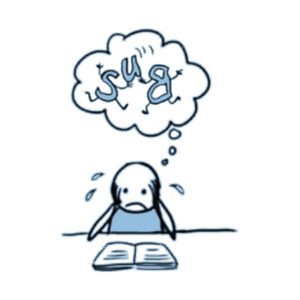 Neurodiversity is a term that refers to the diversity of all our brains, of all the people on the planet.
Neurodiversity is a term that refers to the diversity of all our brains, of all the people on the planet.
The starting point for education assumes that the brain works in largely the same way for everyone, but there are many individual variations in how the brain works and how we behave. That’s the reason why we think and learn in different ways. Those with AD(H)D, dyscalculia, dyslexia, autism, are highly gifted, etc. have a brain that is structured a little differently than what is “normal”.
There are two major differences in the way of thinking, which also affect how learning material is processed and how students learn. Research into how the brain works is a relatively young area, so new insights and discoveries are constantly being made. The two-part separation of this article is therefore a gross simplification, and the reality is much more complex.
Linear thinking
In linear thinking, the left hemisphere is dominant. Linear thinkers think in words, and they think from start to finish. This is a logical and analytical way of thinking.
Conceptual thinking
Conceptual thinkers mainly use their right hemisphere and think in pictures. They keep a good overview of the whole, create associations and easily make new connections. People with AD(H)D, dyslexia, dyscalculia, autism and/or who are highly gifted all think conceptually. Not all conceptual thinkers automatically fall into one of these mentioned categories.
Each way of thinking has its advantages and disadvantages.
Thinking in pictures allows you to process information very quickly, and thanks to associations such thinkers often arrive at creative and innovative solutions. On the other hand, thinking in pictures also means that you need more time to convert pictures into words when explaining or writing something. The same also applies to converting words into pictures when you read or hear something.
Conceptual thinkers have a more diffuse form of attention: the many images and associations overload the working memory which can lead to the fact that it is simply not possible to remain concentrated.
Suffering?
AD(H)D, dyscalculia, dyslexia, autism, etc. are sometimes referred to as “disorders”.
That is stigmatizing.
In addition can negative experiences during studies cause stress or fear of failure for those with e.g. ADHD or dyscalculia. Naturally, a diagnosis can be liberating, but if we no longer look at dyslexia etc. as a disorder, but rather as a unique way of thinking, people can be given the space they need to flourish.
The better you know yourself, the easier it is to accept yourself and why things happen.
Have you yourself, or someone in your family, been diagnosed with ad(h)d, dyslexia, dyscalculia, autism or high sensitivity or do you suspect that one of these diagnoses may be made? Check the resources online; these can indicate you should contact a specialist for further guidance.
Source: https://www.re-mind.be/blog/het-standaardbrein-bestaat-niet